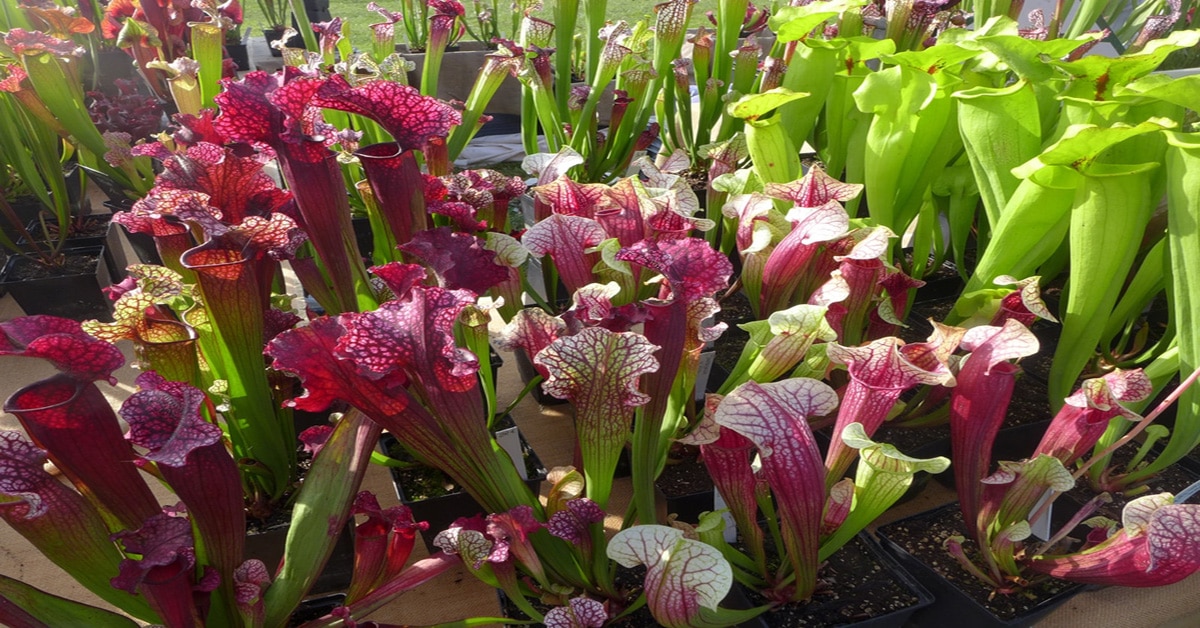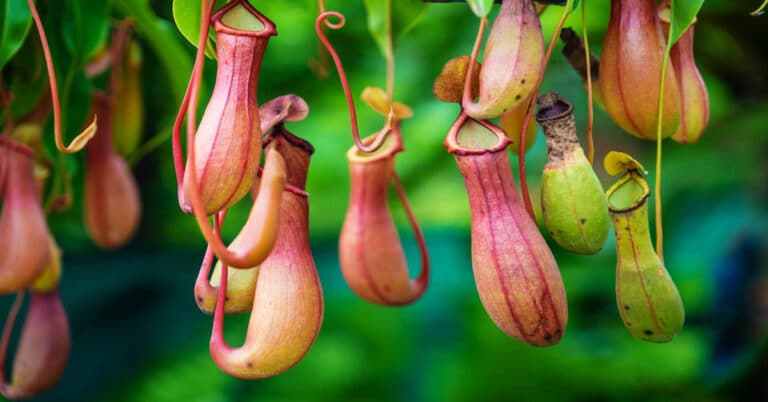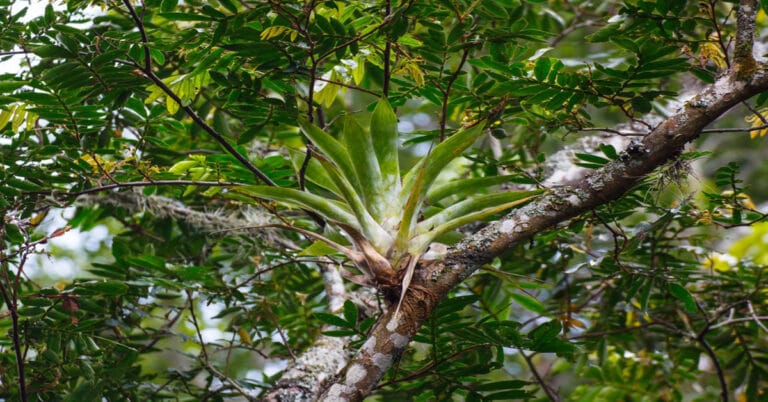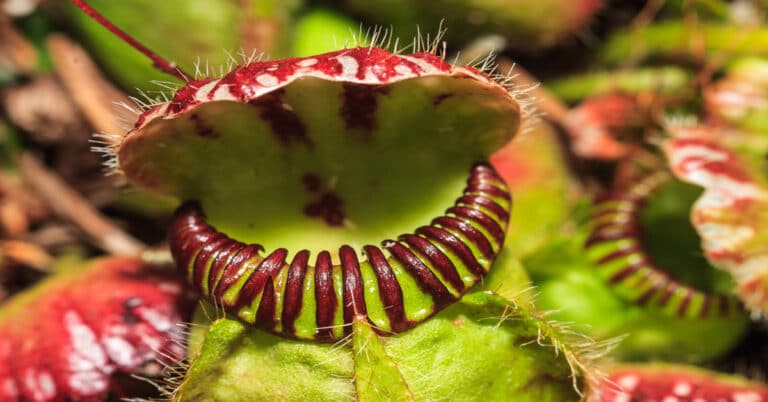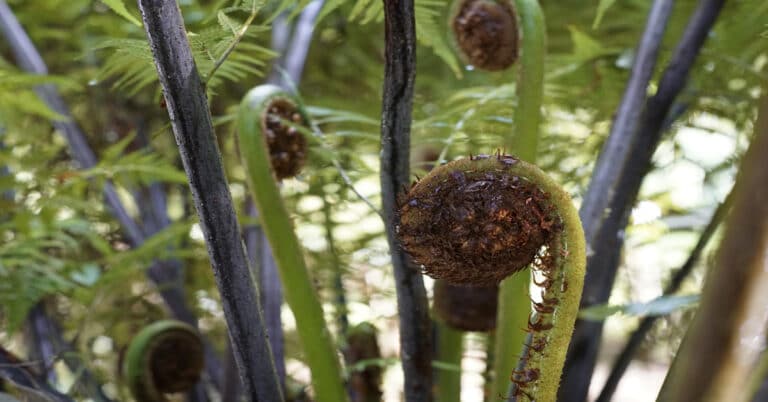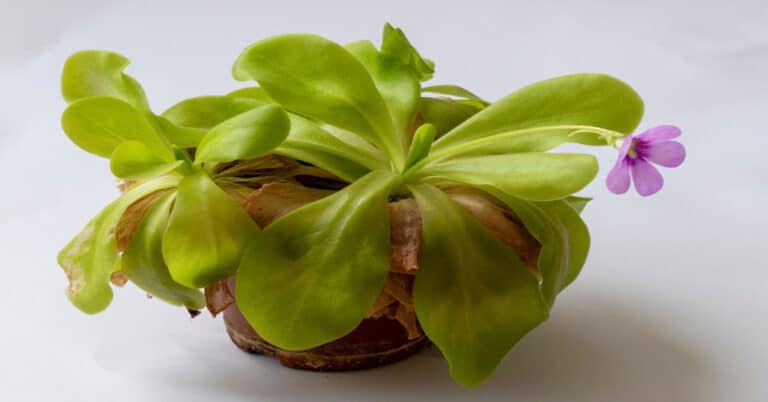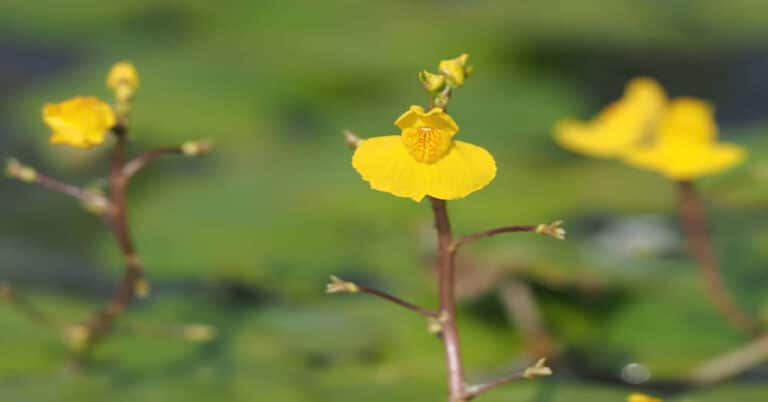North American Pitcher Plant
The North American Pitcher plant or Sarracenia is a type of carnivorous plant that habits the great lakes, the eastern seaboard, Texas, and southeastern Canada, most of its varieties growing in the southeast states.
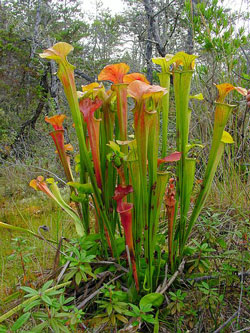
| Kingdom | Plantae (Plants) |
| (Unranked) | Angiosperms |
| (Unranked) | Eudicots |
| (Unranked) | Asterids |
| Order | Ericales |
| Family | Sarraceniaceae |
| Genus | Sarraceniaceae |
Anatomy
The leaves of the North American Pitcher plant have developed to have a funnel-like shape with a hood-like formation growing above the opening that stops rainwater from weakening the digestive juices.
Carnivorous Trap Mechanism
- It is interesting to note that all varieties catch insects and other prey without using any moving parts. They have stationary traps and consist of a combination of attractions like scent, color and nectar, and inescapability. Characteristically, the inlets to the traps are one-way because of the highly adapted features already described.
- Most varieties employ a mishmash of drugged nectar, scent, waxy deposits, which block insect feet, and gravity to bring down insects into their pitcher.
- Certain varieties contain coniine, an alkaloid drug that tranquilizes insects. The insect on entering the plant finds the footing very slippery because of the waxy surface of the walls of the pitcher.
- As the insect goes down further, downward-pointing hairs make its escape impracticable.
Digestion
The lowest part of the tube, containing a pool of liquid consisting of digestive enzymes and wetting agents swiftly drowns the victim and starts digestion. The largely undigested exoskeletons fill up the pitcher tube while summer lasts.
Growth cycle
Pitcher-making starts at the end of the flowering period in spring and ends in late autumn. As autumn draws nearer, the pitchers start withering and the plants create non-carnivorous leaves named phyllodia, which play a part in the economics of carnivory in this variety by assuming a slower metabolism all through winter when the prey is infrequent.
Range and habitat
Most of these species confine themselves to the United States southeastern coastal plain. Most of the North American pitcher plant species grow in the southeastern coastal plain of the United States, but some of them extend northwards and westwards into Canada. They require a habitat with a warm temperature and since they are perennial, the Sarracenia needs a clear demarcation of summer and winter. Swamps, grassy plains and wet fens, with low pH acidic soil, a blend of sphagnum moss and soil, are their permanent habitat
Tips for Domestic Cultivation
Many enthusiasts of carnivorous plants have taken up growing the North American Pitcher plant because its cultivation is easy and uncomplicated. Please read below some tips for a successful effort.
Containers & Planting
A true enthusiast can enjoy raising Sarracenia by sinking wading pools, laundry tubs or plastic pots in the ground, but make sure you provide a slit at the bottom to prevent water from stagnating in the soil
Substrate
Mix one part of sand and two parts of sphagnum peat moss and you have the ideal substrate for the Sarracenia. However, since these plants prefer acidic, moisture retentive and nutrient-poor soil, you would do well to avoid clay and rich soils.
Sunlight
When you decide to cultivate the Sarracenia, make sure to choose a location that provides at least more than five hours of direct sunlight. Remember that these plants do not flourish under artificial lights.
Water and Humidity
The North American Pitcher plants are very finicky to water quality. Use only rainwater, or pure water from a reverse osmosis process.

Having discovered a fondness for insects while pursuing her degree in Biology, Randi Jones was quite bugged to know that people usually dismissed these little creatures as “creepy-crawlies”.

